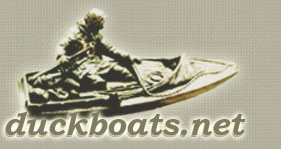.Rob~
I will send some pics of some of my Canada Goose floaters later today. They are Herters Model 81 (their smaller foam goose) bodies with pine heads.
I am guessing you have not yet gotten info or advice from other because your question is so broad.
There are lots of ways to get patterns. You can copy others' birds - either from individual carvers or from factory birds. Many of today's plastic decoys are based on sophisticated masters from great carvers.
Since you mention burlaped decoys, I presume you will make the bodies from foam. If so, it's best if you can find some dock foam - because it's made in large thicknesses and so you can avoid laminating - which can be a little tricky.
You also have to decide on size. Mine are, I think, 21 inches long. Many make geese much larger. You have to think about how big a rig you want and how you'll get it to your gunning spots.
Will you be carving your own heads? Being in Jersey, you can get some good Atlantic White Cedar. Others on this site have recommended Schairer Bros Sawmill, 254 Bremen Ave, Galloway Township (Egg Harbor City), 609-965-0996. I buy my eyes from Van Dykes Taxidermy Supply. My preference for Goose eyes is size 10 or 11 in black - their # is T1SP. And, I just ordered some 6" SS screw eyes from Decoy Rigs at 219-659-8371.
I have just started to make a few foamers - I have not done any burlaping. Instead, I coat bird with epoxy; one straight coat to seal followed (after curing) by a second, thickened coat onto which I sprinkle fine sawdust (from my bandsaw). Probably not quite as tough as burlap but still pretty tough, with a great base for painting.
View attachment Black Duck Foamer - March 2013 - vs.jpg
This Black Duck is an 18"L x 9"W x 5" H foamer I made from styrofoam insulation and epoxied as described above. I use a 1/4" AC plywood bottom board and a plastic tail insert. The head is cedar, fastened with a long screw eye and epoxy. Paint is latex from Home Depot and some tube acrylics.
Hope this helps!
SJS
